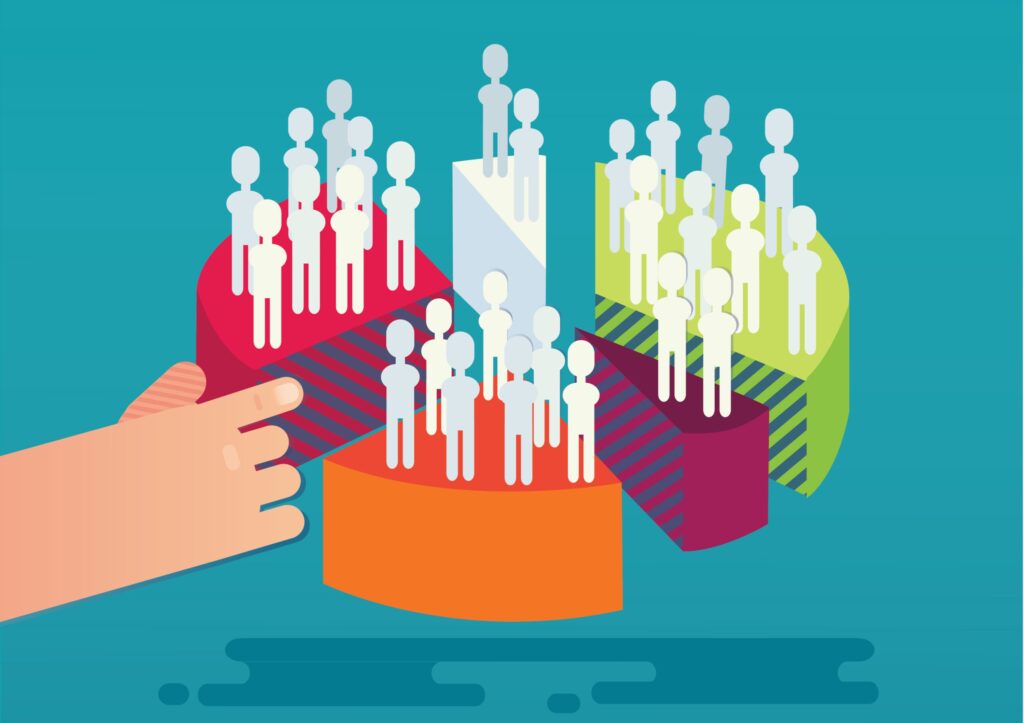THIS IS PART TWO of an excerpt on relationship marketing from the upcoming third edition of David Shepard Associates’ “The New Direct Marketing” (McGraw-Hill).
Much of the discussion about relationship marketing concerns how best a company can interact with its customers. But the profit mechanism-just what relationship marketing will accomplish in a business sense-should also be considered.
Plainly stated, the crux of relationship marketing is long-term retention of customers and satisfying the largest possible portion of their needs with a company’s products and services. While applications of relationship marketing have been extended over the entire range of the customer life cycle, retention and customer development are really the two key elements.
Consumers now expect that technology will allow companies to adapt to them. They want these firms to understand their unique needs and wants, then adapt products and services to those needs.
Consumers would like to see their vendors become “product usage consultants,” helping them to make the correct choice and then gain maximum advantage from the chosen product or service. In this relationship, the company takes partial responsibility for the customer’s selection of a product relative to their needs, how the product is used, and therefore, the customer’s level of satisfaction.
In implementing traditional direct marketing programs, marketers first studied customers’ needs and competitors’ status in the market. When targets of acceptable opportunity were identified, they next developed marketing programs directed toward specific market segments.
The campaign then followed, with promotional list selection, mailing or phoning the customer, collecting responses and reviewing response tracking reports. Results from that promotional cycle were then used as input for planning the next promotional cycle. The overall objective was to increase long-term customer performance (profitability), with the key measure ideally being customer value, but very often being immediate sales.
In the relationship marketing model, we build upon the traditional DM model. The essential initial steps include building infrastructure capabilities such as data collection, data access and marketing tools, product and service customization, customer service procedures and customer access channels.
These capabilities enable the company to use every customer interaction as an opportunity to collect more data. This, in turn, allows the company to better service and promote its customers. The overall objectives are to ease customer access, reduce costs, suggest alternatives and provide relevant added value. The key measures in relationship marketing are customer satisfaction, “share of wallet” within various product categories and stability of the company’s relationship with its customers.
If implemented properly, the company will learn about those customers and provide better service. The result is a very stable relationship. The company gains satisfied, long-term customers. These customers’ needs are met with minimal effort on their part; they would likely incur a substantial expense if they attempted to switch to and “train” another supplier.
Therefore, the essential elements of establishing a relationship marketing program are:
* Collecting information about customer demographics, needs and preferences.
* Products, services and support customized to fit each individual customer’s needs and preferences.
* Customer service via interactive and personalized two-way communications across a variety of channels to determine levels of satisfaction, changes in customer status, whether needs and preferences have been addressed, and whether new products are appropriate.
At its core, relationship marketing is about understanding customers well enough to keep and possibly grow their business over time. Therefore, it requires a much more comprehensive set of data sources than traditional DM. The most effective source of information for relationship marketing programs is the customers themselves.
While the best customer information will vary by industry, the company’s market positioning and marketing programs, certain broad categories of informatio n are universally useful: demographics, life stage, lifestyle, language preference, communication channel preference, level of support desired, attitudes relative to product usage, key factors influencing purchases, overall product category usage, the company’s share of wallet in this product category, use of related products and services and attitude toward the company.
Like the relationship itself, building a base of information on a customer is a long-term process. In the initial stage, the customer will have a basic interest in the company and will usually provide basic information. As the relationship deepens and the company becomes more important to the customer, the amount of information shared will increase, as will the base of behavioral (usually transactional) data.
A well-known delivery services provider is an excellent example of staged information gathering. Basic information about the customer is collected when a new account is opened. This is the easiest time to acquire information because customers need to establish whether they are a good credit risk. However, because a relationship has not been established and most customers can’t adequately forecast their future usage, the information collected is general in nature.
As the customer conducts transactions, a purchase history database collects information such as shipping activity levels and patterns, types of shipments and associated product purchases. These details are analyzed and used to drive follow-up requests for information via outbound telemarketing. Different shippers are asked different questions, and the information is used to customize account statements, recommend services and sell related products that would provide a benefit relevant to the customer.
Another company, a provider of cellular telephone services, offers to use customer information provided at the time of sale to suggest optimal initial calling plans and optional services. The company then makes quarterly reviews of calling patterns and uses the demographic information to suggest calling plans that would minimize costs.
While there clearly is a public movement toward information privacy, both academic studies and practical experience have shown most consumers are reluctant to share information only when there is no clear value proposition. Customers must receive a tangible benefit from providing information and committing to a relationship with the company.
In the past, many firms were product-centric; it was up to the customer to decide if the product provided an appropriate solution and how to use that product most effectively. For sure, companies always supplied marketing literature and instructions for using their products, but today it is quite common to have 24-hour-a-day help desks available for everything from computer software to refrigerators.
Perhaps one of the best examples of customized products is the revolution in the way personal computers are manufactured. While it is still possible to walk into a retail outlet and buy a preconfigured PC, much of the industry has moved toward providing custom-configured machines that can be remotely purchased. Customers specify system characteristics and options, and place orders via phone, fax or the Internet.
Another example is a specialized utilities company focusing on servicing customers that desire to be environmentally conscious. This provider certifies it will purchase and distribute energy only from “green” sources. It also will provide environmentally conscious information via newsletters, Web sites and interactive voice messaging systems.
The customer service function can leverage information to:
* Support the installation and setup process.
* Provide relevant product specifications.
* Suggest new products or features.
* Remind customers of important dates and events.
* Customize products and services.
* Set pricing and payment options.
* Deliver customers the level of support they request.
* Simplify purchase and usage.
* Suggest options to decrease costs.
* Tailor promotions and offers to the customer’s needs.
* Provide consistency and familiarity in customer service.
This trend is especially evident in industries like insurance, computer systems, telephone and financial services. Customer service is rapidly becoming the point of differentiation, not product, price or promotional offers that can be copied overnight. Sustainable competitive advantage is now driven by corporate culture, customer service training, staff empowerment and technology infrastructure (data, data usage and product customization).
In order for a company to develop significant relationships with customers and service them well, several barriers must be surmounted. Among them:
* Implementing a corporate culture focusing on the customer; that is, integrating all marketing, advertising and customer service functions.
* Developing a suite of products and services that can be customized to the unique needs of each customer.
* Training and empowering the customer service staff.
* Developing a technology infrastructure to support collecting customer data, and using that data effectively.
(To be continued.)
 Network
Network

